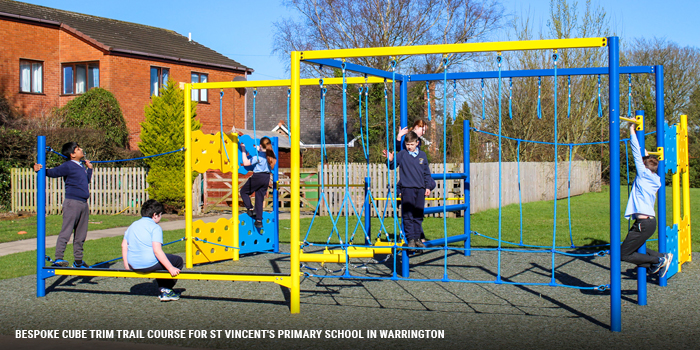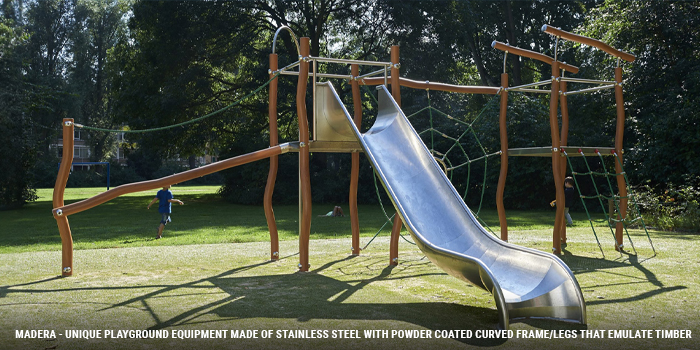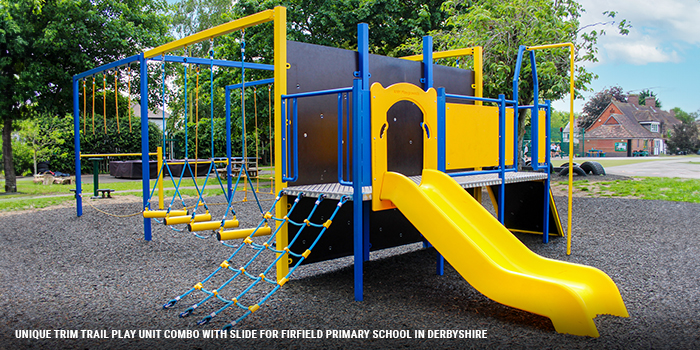What are the best materials for playground equipment?
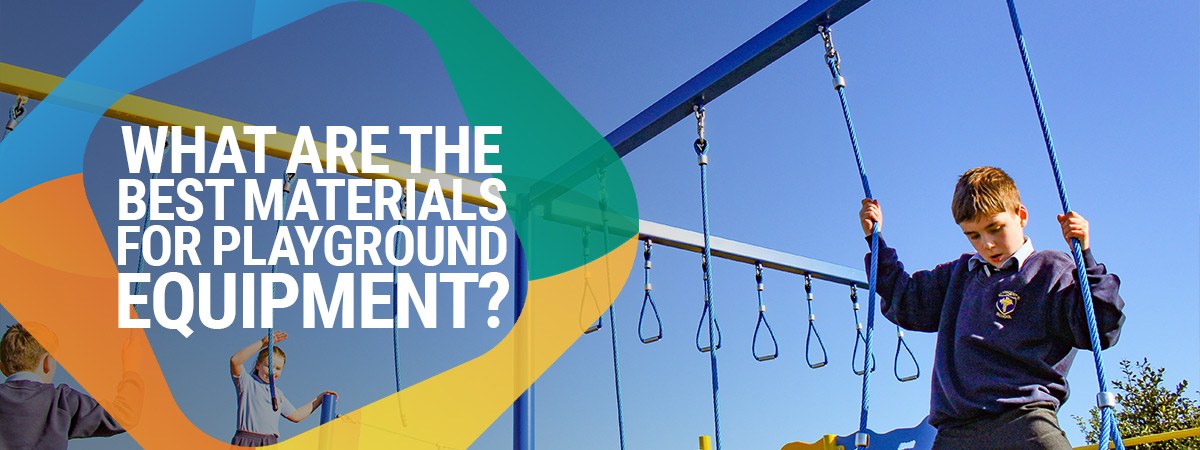
The choice of materials when choosing your playground equipment is crucial. Not only does it affect the safety and durability of the equipment, but it also influences maintenance costs, environmental impact, and overall aesthetic appeal.
Understanding the best materials for playground equipment is essential for headteachers and purchasing managers tasked with making these important decisions.
Understanding the role of material selection in Playground Equipment
The safety of children in any playground environment is critical. And the materials chosen for playground equipment directly influences the safety of the children using it.
For example, materials that splinter, crack, or have sharp edges can pose serious hazards and risks. It is important to choose materials that meet UK safety standards.
Durability and longevity are also a significant influence in material selection. School playgrounds endure heavy use and various weather conditions throughout the year.
It is important to consider durable materials that can withstand constant wear and tear, as well as weather effects, and are essential to ensure the longevity of the equipment.
Maintenance requirements and costs should also be considered. Different materials have varying maintenance needs. While some may require regular treatment and inspections, others are designed for low maintenance. Understanding these requirements helps in budgeting and planning for the upkeep of the playground.
Opting for materials with minimal maintenance can save time and resources for schools, allowing staff to focus on other priorities.
Environmental impact and sustainability are increasingly relevant factors that influence the choice of materials for playground equipment. Choosing eco-friendly materials, such as recycled plastics or sustainably sourced wood, reflects a school’s environmental commitment and works towards the UK Government’s Net Zero Strategy.
Common materials used in playground equipment
When it comes to playground equipment, the choice of materials can make all the difference in creating a safe, durable, and engaging environment for children.
Metal (e.g. galvanised steel, powder coated steel, stainless steel, aluminium)
Metal is an extremely durable and strong material and can withstand heavy use and harsh weather conditions. It requires minimal upkeep, making it a cost-effective option over time. Finally, it is difficult to damage therefore reduces the risk of vandalism.
Potential disadvantages of using metal include its tendency to retain heat, but choosing vibrant powder-coated options can significantly lessen this effect.
Plastic (e.g. recycled, high-density polyethylene (HDPE)
Plastic is smooth and safe, reducing the risk of cuts and scrapes. It also provides excellent resistance to moisture and UV rays. It is also a material that is easy to customise with a range of colour options available.
Wood (e.g. hardwoods, softwoods)
Wood, or timber, provides a warm, natural aesthetic that blends well with outdoor environments.
But when it comes to timber playground equipment, wood is susceptible to decay, rot, and insect infestation, especially in outdoor environments where it’s exposed to moisture and varying weather conditions. This deterioration can weaken the structure and make the surface slippery and hazardous increasing the risk of accidents. Therefore, regular maintenance is required to keep timber safe and functional, which can be costly and time-consuming.
Rubber (e.g. recycled, Eco Mulch)
An excellent material for surfacing that is placed under equipment to cushion falls and reduce injuries. It provides a safe non-slip surface even when wet, and requires minimal upkeep and is resistant to weathering.
When choosing rubber-based playground equipment it is important to consider that it is typically used for surfacing rather than for equipment structures due to its flexibility.
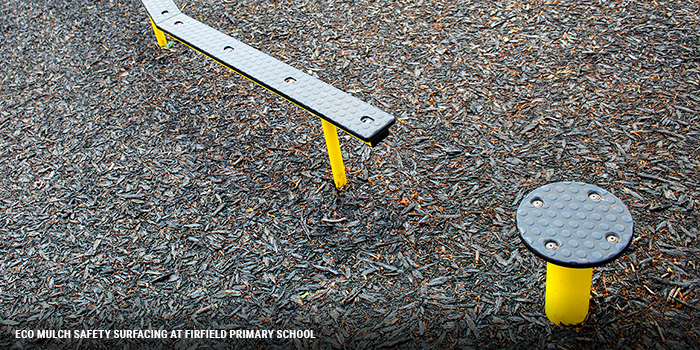
How to choose the right playground equipment materials
Selecting the right materials for playground equipment is a critical decision that impacts the safety, durability, maintenance requirements, environmental footprint, and visual appeal of your school’s playground.
To help you select the right material and playground equipment for your school, here are 6 steps to take:
1) Define your priorities
Think about how you want to use your playground or outdoor space and make sure it aligns with your educational goals, for example, are you looking for play equipment for children to explore or more practical equipment for children to use?
2) Assess your outdoor environment
Consider the size of the playground and proximity within the school grounds, for example, shade coverage and frequency of use.
3) Research playground equipment
Review options for playground equipment to understand available options. Look at case studies from suppliers and manufacturers to see how their products have benefitted schools in real-life applications.
4) Seek expert opinion
Once you have an idea, contact a playground equipment supplier who will offer their expertise. Here at AMV Playgrounds, we can help advise you on material selection, product options, best use of your space and other factors. We also visit your school to get a more detailed understanding of your requirements.
5) Plan cost analysis
Consider the initial purchase and installation costs, as well as future maintenance costs. But take into account the longevity of the playground equipment, so calculate costs over a 25 year period (the length of the warranty on a selection of our products, talk to our team for more information).
6) Purchase and installation plan
Take into consideration when you purchase the equipment and when you plan to install. For example, many schools decide to install during the holiday period when there are no children around.
Final thoughts
Understanding the unique benefits and drawbacks of each material for playground equipment allows headteachers and purchasing managers to make informed choices that cater to the specific needs of their school.
Here at AMV Playgrounds, we speak to headteachers and purchasing managers on a daily basis, helping them with product recommendations, technical advice, and much more. We aim to make the process of selecting the right playground equipment as simple as possible, giving you more time to concentrate on other areas of your school.
We also work closely with architects, main contractors, and sub-contractors who are working on educational projects and looking to specify suitable playground equipment.
All our playground equipment is made in our UK-based factory, by skilled tradesmen, and come with an extensive 25-year warranty against rust and corrosion.
Finally, AMV Playgrounds is fully committed to minimising potential negative impacts on the environment arising from our company’s operations. This is in line with the UK Government’s Net Zero Strategy.
We are here to help realise your vision of a better playground environment for your school’s children.
Contact our team today on telephone 01704 898 919, email sales@amvplaygrounds.co.uk
